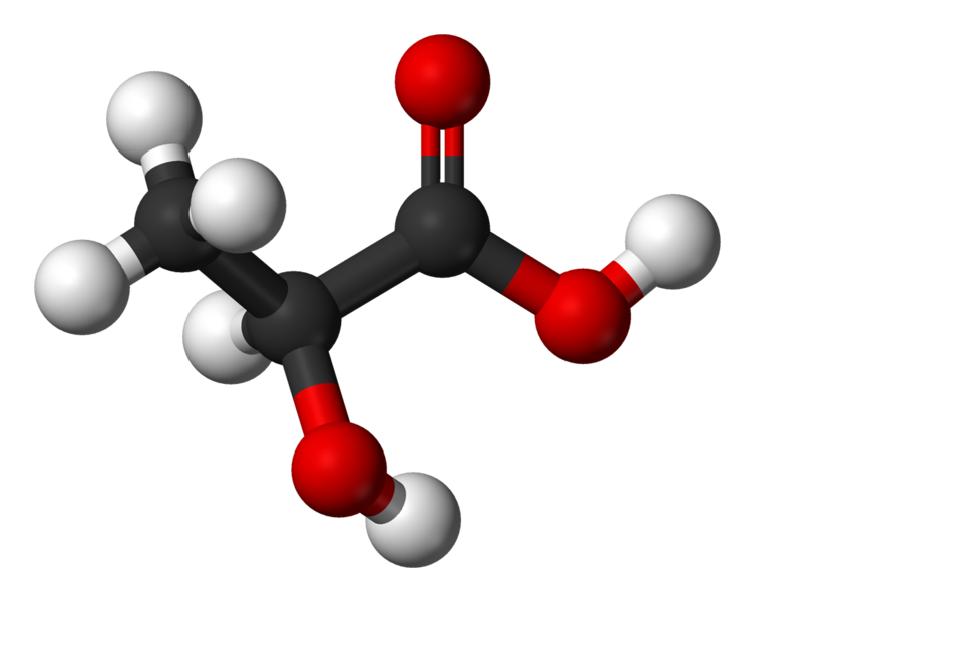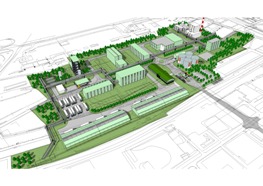 |
BMe Research Grant |

|
Oláh György Doctoral School (Chemistry and Chemical Engineering Sciences)
Department of Applied Biotechnology and Food Science
Supervisor: Dr. Béla Sevella
Technological optimization of a biorefinery
Introducing the research area
 I participate in
the design of a green chemical unit called biorefinery based on renewable raw
materials. The raw material of this plant can be crops (e.g. wheat, sweet
sorghum), while its main product is lactic acid, a platform compound with
versatile application. The planned unit can replace the previous
petrochemistry-based and harmful technologies, since lactic acid is the starting
material of several other substances such as biosolvents (ethyl lactate, butyl
lactate), preservatives (lactate salts) or biodegradable plastics (poly lactic
acid).
I participate in
the design of a green chemical unit called biorefinery based on renewable raw
materials. The raw material of this plant can be crops (e.g. wheat, sweet
sorghum), while its main product is lactic acid, a platform compound with
versatile application. The planned unit can replace the previous
petrochemistry-based and harmful technologies, since lactic acid is the starting
material of several other substances such as biosolvents (ethyl lactate, butyl
lactate), preservatives (lactate salts) or biodegradable plastics (poly lactic
acid).
Brief introduction of the research place
 The Fermentation
Pilot Plant Laboratory (F-labor) of the Department of Applied
Biotechnology and Food Science gives place to my researches. The profile of this
research group is to realize biotechnological researches from laboratory to
pilot scale: utilization of biodiesel by-products; production of a viral
preparation against Fire blight; development of a starch-based biogas and
bioethanol technology; recombinant protein expression by yeast cells;
fermentative itaconic acid production; development of a lactic acid producing
technology based on wheat and sweet sorghum.
The Fermentation
Pilot Plant Laboratory (F-labor) of the Department of Applied
Biotechnology and Food Science gives place to my researches. The profile of this
research group is to realize biotechnological researches from laboratory to
pilot scale: utilization of biodiesel by-products; production of a viral
preparation against Fire blight; development of a starch-based biogas and
bioethanol technology; recombinant protein expression by yeast cells;
fermentative itaconic acid production; development of a lactic acid producing
technology based on wheat and sweet sorghum.
History and context of the research
Researches on lactic acid fermentation have several decades of history in
global sense and at our department as well. In the 90s our fermentation group
was involved in the topic of biological lactic acid production by the former Nitrokémia Co., and this cooperation resulted in a feasibility study of a lactic
acid plant.
In 2006, the need for developing a fermentative lactic acid technology arose
again through the commission of the new Nitrokémia Co. and we started our researches in the form of an Estonian
collaboration (Nordbiochem LLC). The raw material of the planned lactic acid plant is wheat, grown in
large quantities in Hungary and possessing high starch content which can be an
appropriate raw material for first generation technologies of bioproducts. The
goal of this project is to build a biorefinery
capable of processing 100 thousand tons of wheat a year. In close collaboration
with our department, the project company (Hunest Biorefinery Ltd.) started the
technological design of the plant destined to Balatonfűzfő and commenced writing the
detailed feasibility study.

The need for fermentation products and the utilization of biomass brought to life our new consortial project, as well. In 2008, our project entitled "A cukorcirok integrált mezőgazdasági termelési, tárolási, feldolgozási és logisztikai rendszerének kidolgozása" (Development of an integrated agricultural production, storage, processing and logistic system to sweet sorghum) won the support of the National Office for Research and Technology, hence during the period of 2009–2011 we have the opportunity to participate in the planning of a sweet sorghum-based biorefinery producing lactic acid as one of the main products.
Aim of the research
My research primarily points at the technological development of lactic acid
fermentation in the framework of this biorefinery project. Our global target is
finding a technological solution applicable to both raw materials and capable of cost-effective production at the same time, and integrating further producing
units based on lactic acid so that the resulting complex can become a third phase
biorefinery. This type of plant flexibly adapts to market needs and disposable
raw materials, while its energy consumption required for the production can be partly ensured from by-products and wastes, by burning or processing them to biogas.
The aim of our researches on fermentation technology is to find an effective and
cheap solution, starting from two different raw materials, and examining other
technological parameters besides fermentation medium and finally, to scale-up this
optimized technology to pilot plant scale.
Methods
In a broad sense, fermentative production means a biological reaction, where
the desired product (compound) is created from mostly biological raw materials
(biomass) by one or more microorganisms or by their cell components. This means
that the main aspects of lactic acid (product) production are raw materials
(substrate), producing microorganisms and required
technology.
In bacterial lactic acid fermentations, cells produce energy during lactic
acid formation in the form of ATP for their own purposes using
carbon sources (sugars). For bacterial growth and to build cell components, cells mainly
need nitrogen sources, whereas only a small part of carbon sources is used up for this purpose.
Consequently, the essential steps of lactic acid fermentation are as follows,
-
selection of appropriate microbe: isolation, screening, strain development (genetically)
-
examination of nutrient needs for the selected strain: carbon, nitrogen, micro-component sources
-
qualitative and quantitative optimization of raw materials according to bacterial needs: medium optimization
-
selection of the appropriate pre-treatments and fermentation techniques
-
examination of technological parameters of fermentation done on optimized medium: pH, temperature etc.
-
scale-up of the developed procedure
These tasks may be associated with other problems to be solved in the field of technological developments:
-
selection of raw materials (e.g. appropriate type of sweet sorghum)
-
preparation, fractionation and pre-treatment of raw materials
-
solutions of storage issues of the raw materials
-
supply or in-house production of medium supplements
-
computer simulation and economical evaluation of the experimentally developed techniques
According to the steps mentioned above my research involved the following topics:
-
Experiments on a medium previously optimized by our research group, called Lac-2, with glucose as carbon source:
-
selection of a mesophilic bacterium strain
-
parallel fermentation experiments
-
scale-up to 250 L
-
Technological developments starting from wheat as raw material:
-
medium optimization
-
parallel application of starch hydrolysis and lactic acid fermentation
-
Technological developments starting from sweet sorghum as raw material:
-
examination of sweet sorghum types
-
storage and sugar preservation of sweet sorghum juice and chaff
-
medium optimization
-
Examination of nutrient needs of the used bacterium strain:
-
vitamin and amino acid needs
-
determination of optimal rate for carbon/nitrogen/micro-component sources
-
Effect of pH-regulation and temperature on lactic acid production
-
Development of a lactic acid producing technology based on thermotolerant strain:
-
screening of thermotolerant bacteria
-
nutrient needs of a thermotolerant bacterium
-
use of the selected strain on wheat or sweet sorghum-based media (in laboratory scale)
-
Alternatives to producing yeast extract as supplement for lactic acid fermentation:
-
yeast fermentation on the cellulose and hemicellulose fraction of sweet sorghum bagasse
-
yeast fermentation on sweet sorghum juice
-
computer simulation and economic evaluation of these alternatives
Results
My research results can be summarized as follows,
- Successfully scaled up a classic, batch lactic acid fermentation process
up to 250 liters, on a previously optimized medium, with glucose as carbon
source, using a mesophilic lactic acid bacterium.

-
Optimized a wheat flour-based medium, using its saccharified starch content as carbon source, a part of its protein content (gluten and water soluble proteins) as nitrogen source and a minimal amount of yeast extract (YE) as micro-component source.
-
Compared advantages of simultaneous saccharification and fermentation (SSF) and separate hydrolysis and fermentation (CHF) techniques, and successfully optimized duration of separate hydrolysis before fermentation in a combined hydrolysis and fermentation technique (CHF).
-
Optimized a sweet sorghum juice-based medium, using its sugar content as carbon source, added gluten (wheat proteins) as nitrogen source and a minimal amount of yeast extract (YE) as micro-component source.
-
According to the results of these optimization experiments, I determined the nitrogen and micro-component need of the strain used at a given carbon source level, and defined the essential vitamins and amino acids. Based on the results, I worked out an optimization process (that resulted in a patent application).
- Investigated the pH and
temperature dependence of the strain, and developed a combined pH-regulation
technique, jointly using calcium carbonate and ammonium
hydroxide as pH-regulating agents.
- I selected a thermotolerant lactic acid bacterium and started determining its nutrient needs and its adaptation to both media mentioned above.
-
Based on these results, I started computer simulation and economic evaluation of the biorefinery's processes (lactic acid fermentation, in-house yeast extract production on sweet sorghum bagasse or juice).
Expected impact and further research
Utilization of the fermentation process(es) developed can be realized in two running projects.
Until the end of 2011, we participate in the
development of an agro-industrial model in the frames of the project entitled "A cukorcirok integrált
mezőgazdasági termelési, tárolási, feldolgozási és logisztikai rendszerének
kidolgozása" (Development of an integrated agricultural production, storage,
processing and logistic system for sweet sorghum), using the results of our researches on
lactic acid fermentation and yeast extract production. The indirect aim of this
work (supported by NKTH) is to create an R&D and innovative
background capable of continuously supporting the production and expanding
the consumption.
The long-term aim of a prospective biorefinery
to be established in Balatonfűzfő (by Nitrokémia Co.) is to produce a
high-quality and cost-effective platform compound (lactic acid), which can be an
appropriate raw material for the production of a biodegradable plastic (PLA),
thus creating an environmentally friendly, green chemical unit.
Publications, references, links
Related publications
Patent
- Hetényi K. Zs., Németh Á., Sevella B., Kovács L. P., Bodnár Zs.: Eljárás haszonnövények fermentációs felhasználására tejsav és származékainak előállítása céljából, P1000061 (patent application: January of 2010)
Papers
- K. Hetényi, K. Gál, Á. Németh, B. Sevella: Use of sweet
sorghum juice for lactic acid fermentation: preliminary steps in a process
optimization, Journal of Chemical Technology and Biotechnology 85 (2010)
872–877
- K. Hetényi, Á. Németh, B. Sevella: First steps in the development of a wheat flour-based lactic acid fermentation technology. Culture medium optimization, Chemical and Biochemical Engineering Quarterly (2009) under publication (publication is expected: 2010/2)
- K. Hetényi, Á. Németh, B. Sevella: Examination of medium supplementation for lactic acid fermentation, Hungarian Journal of Industrial Chemistry 36 (2008) 49–53
- K. Hetényi, Á. Németh, B. Sevella: Researches on White Biotechnology, Hungarian Journal of Chemistry 3 (2008) 102–106
Oral Presentations
- Hetényi K., Németh Á., Sevella B.: Tejsavbaktérium tápanyagigényének technológiai szempontú vizsgálata, Műszaki Kémiai Napok ’10, Veszprém, 27–29 April 2010
- Hetényi Kata: Biofinomító technológiáinak optimálása, Szent-Györgyi Albert Szakkollégium, A Biotechnológia a biológia, a kémia és a mérnöki tudományok találkozása c. konferencia, Budapest, 20 March 2010
- Hetényi K.: Biofinomító technológiáinak optimálása, Vegyészmérnöki és Biomérnöki Kar Oláh György Doktori Iskolájának VII. konferenciája, Budapest, 4 February 2010
- K. Hetényi, Á. Németh, B. Sevella: Lactic acid fermentation on wheat flour via SHF and SSF technology, 2nd Central European Forum for Microbiology (CEFORM), Keszthely, 7–9 October 2009 (English), abstract: Acta Microbiologica et Immunologica Hungarica 56 (2009) 167–168
- K. Hetényi, Á. Németh, B. Sevella: Tejsav-fermentációs tápközeg vitamin kiegészítése, Magyar Mikrobiológiai Társaság 2008. évi Nagygyűlése, XI. Fermentációs Kollokvium, Keszthely, 15–17 October 2008, abstract: Acta Microbiologica et Immunologica Hungarica 56 (2009) 36
- K. Hetényi, Á. Németh, B. Sevella: Tejsav fermentációs tápközeg kiegészítésének vizsgálata, Műszaki Kémiai Napok ’08, Veszprém, 22–24 April 2008
- K. Hetényi, Á. Németh, B. Sevella: Tejsavtermelő technológia fejlesztése, Műszaki Kémiai Napok ’07, Veszprém, 25–27 April 2007
Posters
- K. Hetényi, K. Gál, Á. Németh, B. Sevella: Use of sweet sorghum juice for lactic acid production, Műszaki Kémiai Napok ’09, Veszprém, 21–23 April 2009; Vegyészmérnöki és Biomérnöki Kar Oláh György Doktori Iskolájának IV. konferenciája, Budapest, 4 February 2009
- K. Hetényi, B. Sevella: Cost effective lactic acid production on wheat flour, Pannon Mérnöknapok, Veszprém, 27–28 February 2008; Vegyészmérnöki és Biomérnöki Kar Oláh György Doktori Iskolájának V. konferenciája, Budapest, 8 February 2008
- K. Hetényi, Á. Németh, B. Sevella: Researches on Renewabe Resources at BUTE ABFS F-labor, 5th Croatian Professional and Scientific Conference on Biotechnology with International Participation, Stubicke Toplice, 9–10 May 2007
Links
